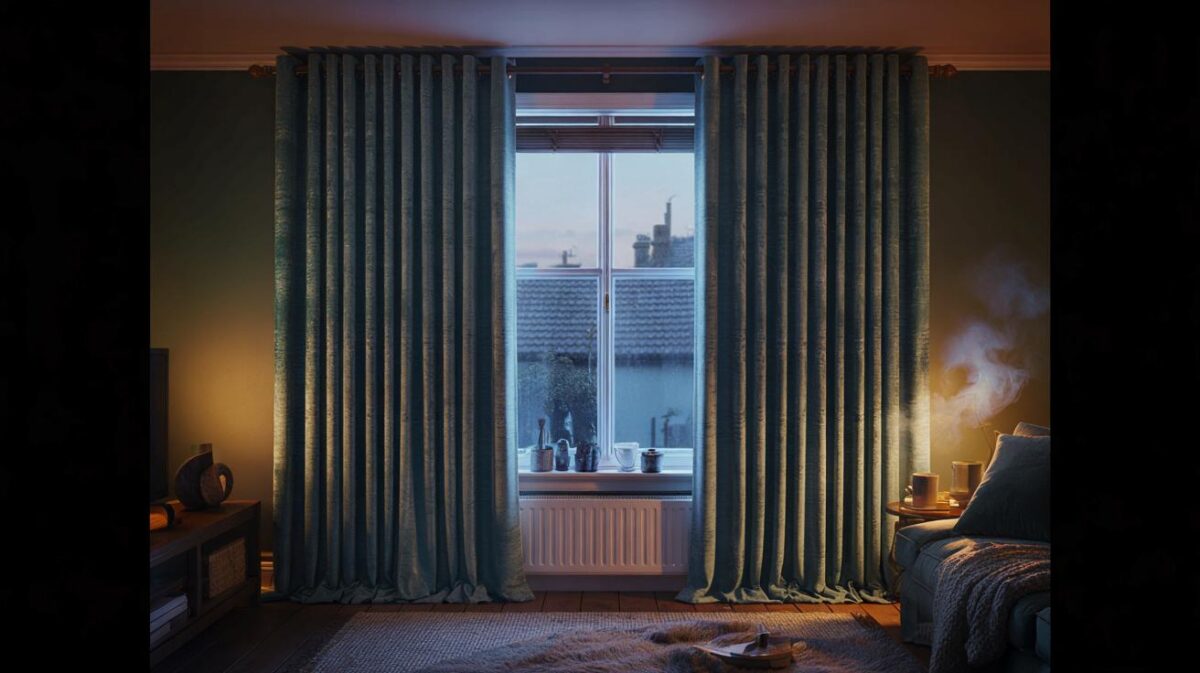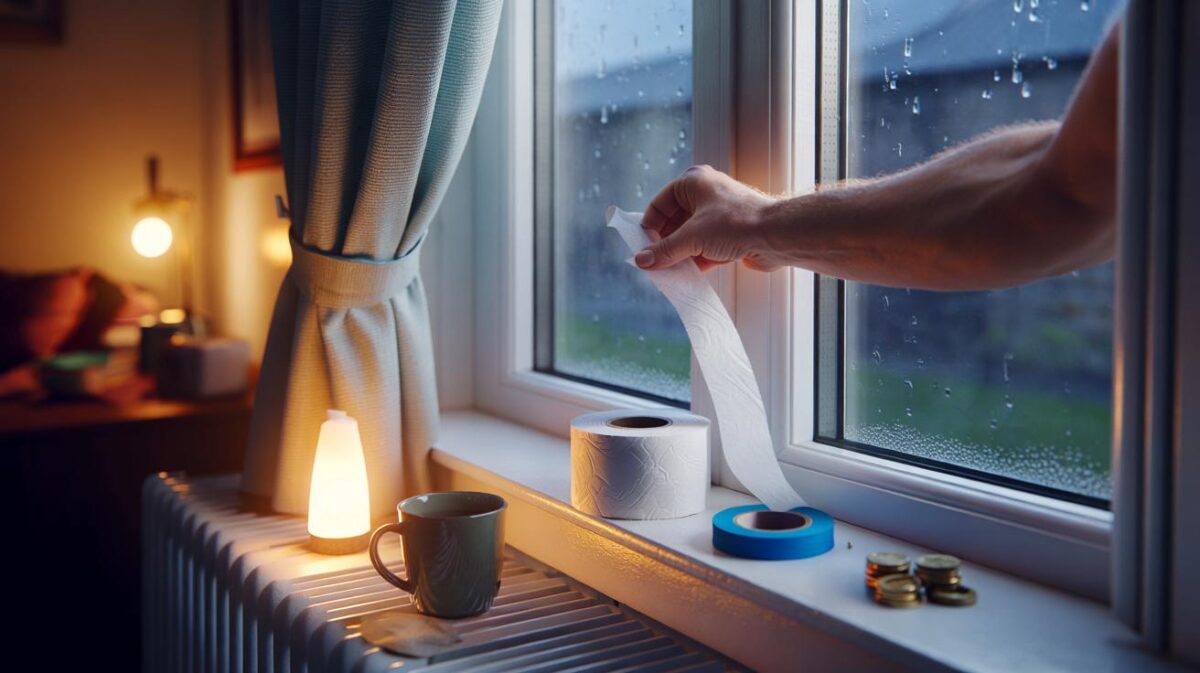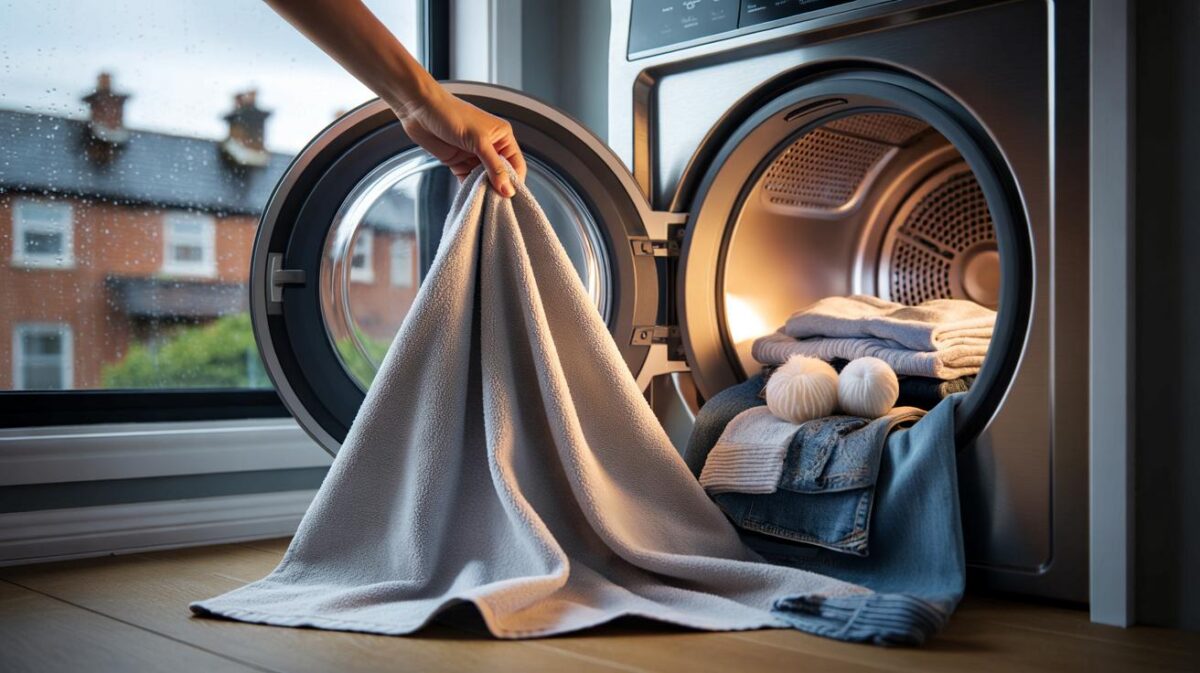Energy bills are still biting, and rooms with radiators on outside walls keep bleeding heat into the brick. Across the UK, families are trying a small, almost cheeky hack that costs about £4 and doesn’t involve nudging the thermostat down. It’s quick, it’s tidy, and it feels like winning back warmth you’ve already paid for.
On the radiator by the back door, a thin silver panel disappears behind the fins with a soft slide, as ordinary as peeling a sticker. Ten minutes later the room feels different — not hotter, exactly, but less leaky, less cruel to your toes.
The group chat lights up: “Got mine from Poundland — four quid.” Someone else shares a photo from their hallway, foil tucked neatly behind a radiator on an outside wall. Another adds a chart from their smart thermostat showing shorter boiler cycles. The wall stops stealing your heat.
The £4 heat-saver hiding in plain sight
The trick is simple: slip **radiator reflector foil** behind radiators on external walls. The metallic surface bounces heat back into the room instead of letting it sink into cold brick. Your thermostat setting stays the same, but the room keeps more of each burst of warmth.
In Stockton-on-Tees, Beth stuck pre-cut foil panels behind two radiators overlooking her garden. She’d spent £4.49 on a budget roll and used a couple of sticky pads. Over the next week, her smart plug showed the boiler firing for fewer minutes in the early evening, even with the thermostat unchanged. “The room actually felt even,” she said. “Not just hot near the rad, and icy by the wall.”
Here’s why it works. Radiators don’t just warm the air; they also radiate heat forward and backward. On an external wall, a chunk of that backward heat disappears into masonry. A reflective layer reduces that escape route, so more energy stays in the room. Tests on older, uninsulated walls show the biggest benefit; newer, well-insulated homes still gain a modest lift. The whole-house saving is small but steady — and it stacks across rooms.
How to do it in 20 minutes for under a fiver
Buy a roll of radiator reflector foil or a budget panel kit — many shops sell them for about £4. Cut to size, leaving a slim border so it doesn’t show above the radiator. Stick it to the wall, not the radiator, using small pads or double-sided strips, and leave a little gap behind the radiator so air can move freely.
Target radiators on external walls first. Avoid covering thermostatic radiator valves or the bracket area. If you’re renting, use removable pads instead of strong tapes so the paint stays put. We’ve all had that moment when the living room feels warm until you sit by the outside wall and feel the chill stream: this is for that moment. Let’s be honest: nobody does that every day.
Work clean. Wipe the wall so the pads actually grip, measure twice, cut once. If the radiator is heavy, you don’t need to unhook it — the foil slides behind from above with a bit of wiggle. For the thrifty, cardboard wrapped in kitchen foil can help, though it’s less durable and neat. *Do the small thing now, feel the warmth tonight.*
“It’s not magic — it’s stopping loss,” says Tom, a heating engineer in Manchester. “On older walls, you feel the difference fastest. People expect a miracle. What they get is a room that holds onto heat between boiler cycles.”
- What you’ll need: radiator foil or panel (£4–£6), scissors, pencil, removable sticky pads, tape measure.
- Optional extras: radiator key for a quick bleed, gentle spray cleaner, cloth.
- Where it helps most: radiators on external or north-facing walls.
- Where to skip: electric storage heaters, towel rails in mixed-use bathrooms.
Beyond foil: small tweaks that stack the savings
This tiny fix gets better when paired with other cheap wins. A £1 radiator key to bleed trapped air. Draught excluders under doors or a homemade sausage of old tights and rice. Thick curtains closed at dusk. None of these demand a colder thermostat; all of them reduce waste and even out comfort.
There are pitfalls to dodge. Don’t push sofas flush against radiators — give them a hand’s breadth so warm air can rise. Don’t tape foil so high it peeks above the radiator and catches the eye. Don’t block thermostatic valves — **don’t cover thermostatic valves** — they read the room and need clear air around them to stay honest. And don’t expect the gas bill to nosedive overnight; look for steadier room temps and shorter boiler bursts instead.
Some readers ask about windows. Bubble wrap as a temporary “secondary glazing” can be a win on single glazing, especially in box rooms and home offices. It’s not pretty, but neither is watching warmth drain into the night. For many, the £4 panel is the neat, invisible fix that gets the biggest smile for the least cash — **a fiver well spent**.
150 words of synthesis that invite a second thought
Every winter creates its own set of small negotiations. Where you sit on the sofa. How long you leave the shower door open. Which room becomes a refuge on a cold snap. The charm of the £4 radiator trick is that it chips away at these compromises without asking you to be colder. It shrinks the invisible leak in the wall, and the room feels fairer for it.
The bigger picture is encouraging. Tiny, repeatable tweaks add up across the street, the town, the country. Friends swap photos, neighbours share a spare roll, tenants stick panels that leave no mark when they move out. You don’t need a toolbox or an hour; just a quiet moment and a pair of scissors. If you try it, tell someone else what changed — the warmth, the boiler graph, the mood of the room at 9pm. Stories spread quicker than heat.
| Point clé | Détail | Intérêt pour le lecteur |
|---|---|---|
| £4 reflector trick | Foil panel behind radiators on external walls | Keeps more heat indoors without touching the thermostat |
| Quick install | Measure, cut, stick; no tools or draining needed | Fast comfort boost, renter-friendly, low risk |
| Best targets | Older walls, north-facing rooms, draughty spots | Maximises payoff where heat loss is highest |
FAQ :
- Does radiator foil damage paint or plaster?Use small removable pads on a clean, dry wall. They’ll hold the panel and come away easily when it’s time to redecorate.
- Can I just use kitchen foil and cardboard?Yes, in a pinch. It reflects heat, though it’s less tidy and can curl. Purpose-made foil is thicker, flatter, and lasts longer.
- How much money could this actually save?Expect a small, steady gain — often a few percent of heating use in rooms with external-wall radiators. Bigger effects in older or poorly insulated homes.
- Is it safe behind every radiator?For standard wet central-heating radiators, yes, when placed against the wall with a small air gap. Skip electric storage heaters and keep foil away from sockets and cabling.
- Will my landlord mind?Most renters use removable pads so nothing marks the wall. It’s a reversible, low-cost improvement that doesn’t alter the property.









